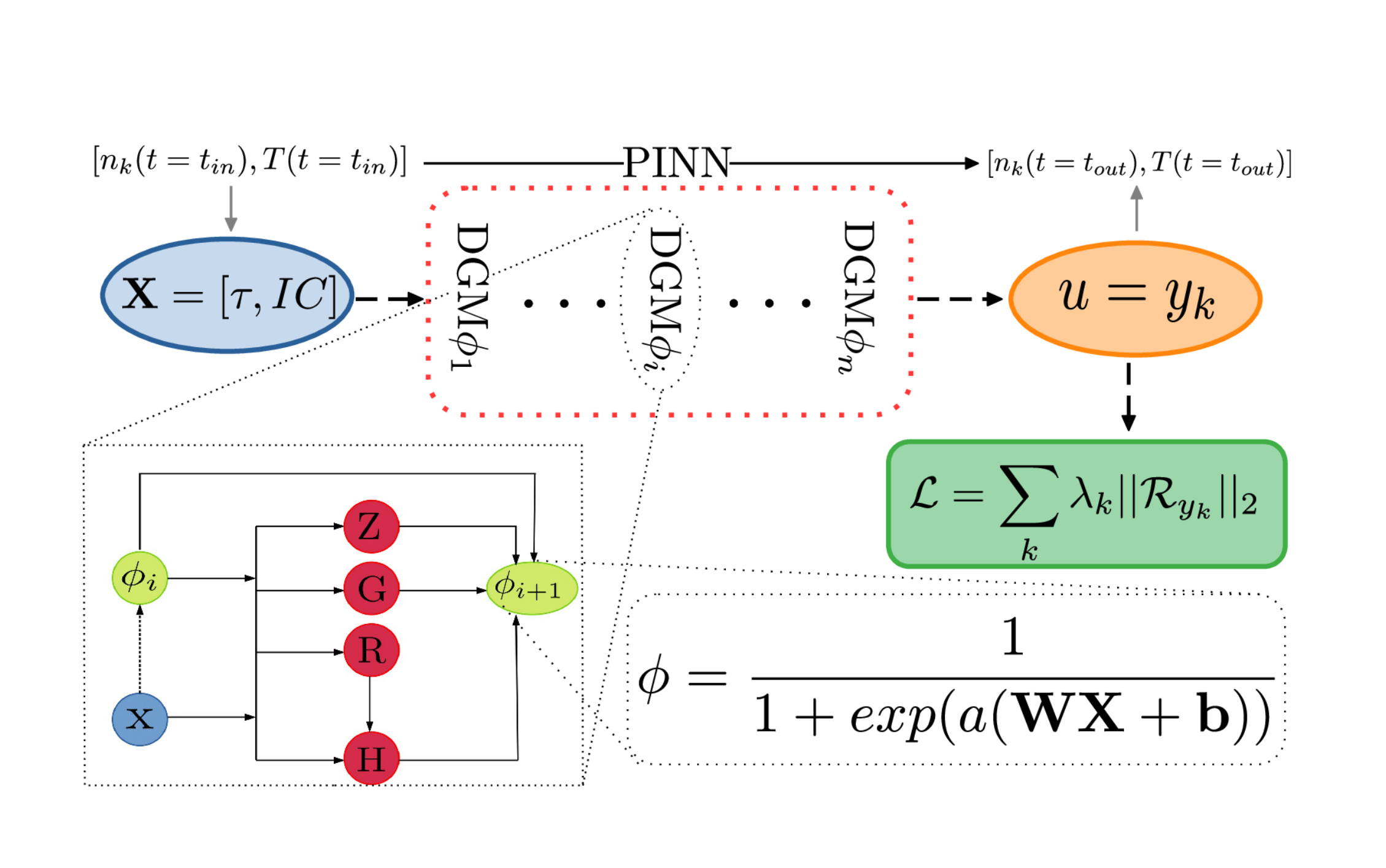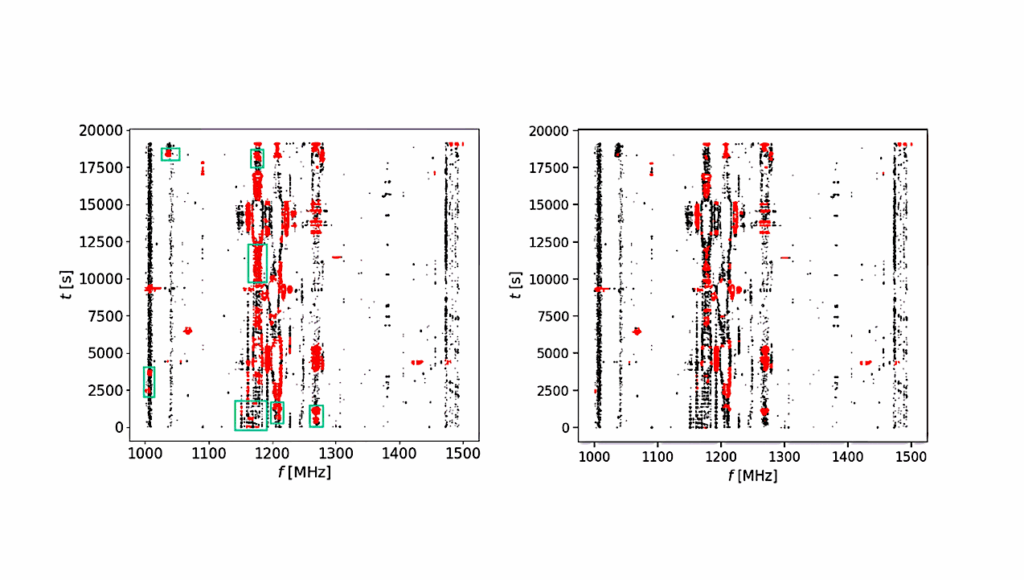Neural Networks: Solving The Chemistry Of The Interstellar Medium

Non-equilibrium chemistry is a key process in the study of the InterStellar Medium (ISM), in particular the formation of molecular clouds and thus stars.
However, computationally it is among the most difficult tasks to include in astrophysical simulations, because of the typically high (>40) number of reactions, the short evolutionary timescales (about 104 times less than the ISM dynamical time) and the characteristic non-linearity and stiffness of the associated Ordinary Differential Equations system (ODEs).
In this proof of concept work, we show that Physics Informed Neural Networks (PINN) are a viable alternative to traditional ODE time integrators for stiff thermo-chemical systems, i.e. up to molecular hydrogen formation (9 species and 46 reactions). Testing different chemical networks in a wide range of densities (−2<logn/cm−3<3) and temperatures (1<logT/K<5), we find that a basic architecture can give a comfortable convergence only for simplified chemical systems: to properly capture the sudden chemical and thermal variations a Deep Galerkin Method is needed.
Once trained (∼103 GPUhr), the PINN well reproduces the strong non-linear nature of the solutions (errors ≲10%) and can give speed-ups up to a factor of ∼200 with respect to traditional ODE solvers. Further, the latter have completion times that vary by about ∼30% for different initial n and T, while the PINN method gives negligible variations. Both the speed-up and the potential improvement in load balancing imply that PINN-powered simulations are a very palatable way to solve complex chemical calculation in astrophysical and cosmological problems.
Lorenzo Branca, Andrea Pallottini
Comments: 16 pages, 12 figures, accepted for publication on MNRAS
Subjects: Astrophysics of Galaxies (astro-ph.GA); Machine Learning (cs.LG)
Cite as: arXiv:2211.15688 [astro-ph.GA] (or arXiv:2211.15688v1 [astro-ph.GA] for this version)
Submission history
From: Lorenzo Branca Mr
[v1] Mon, 28 Nov 2022 19:00:01 UTC (2,196 KB)
https://arxiv.org/abs/2211.15688
Astrobiology, Astrochemistry








